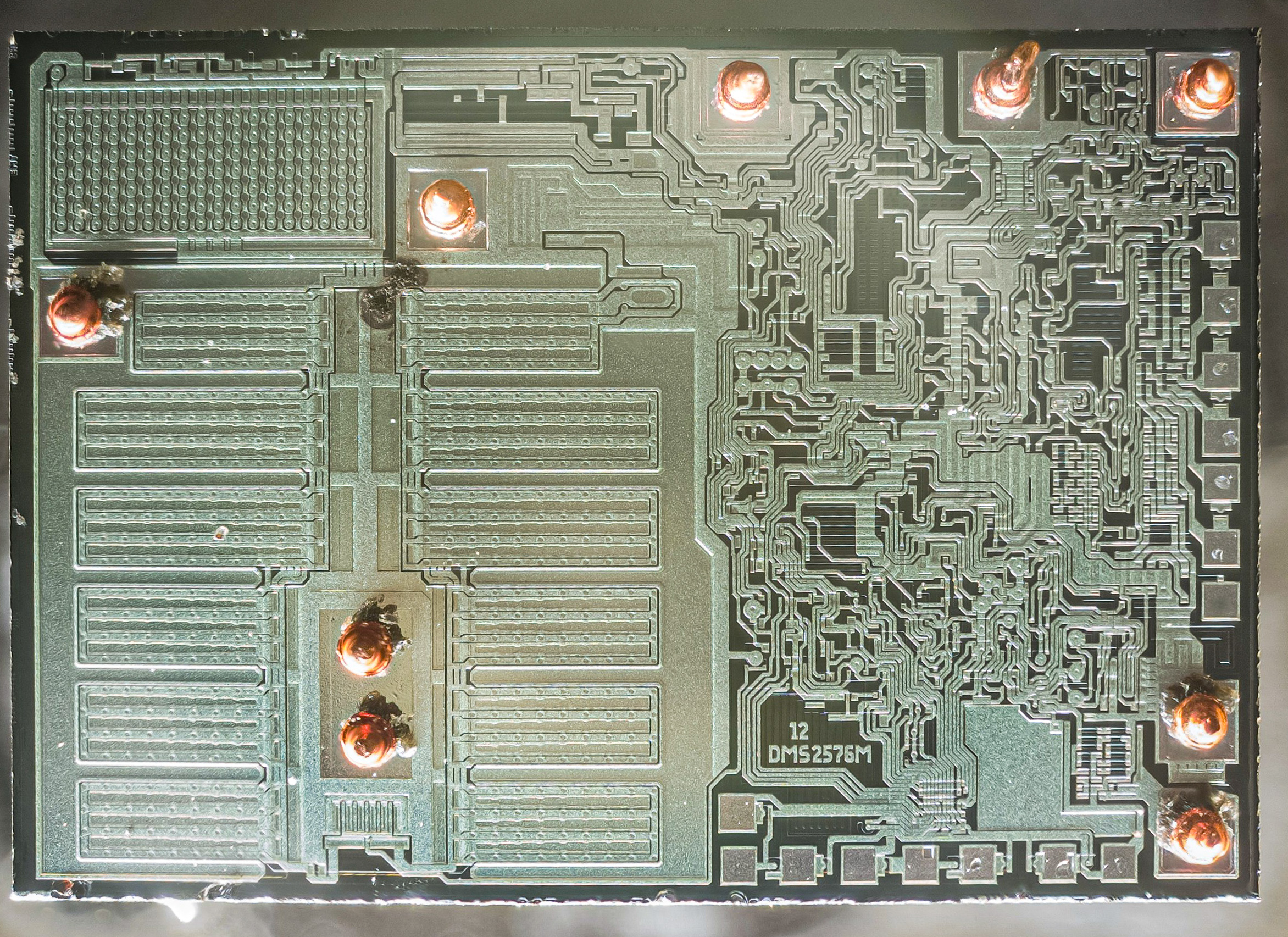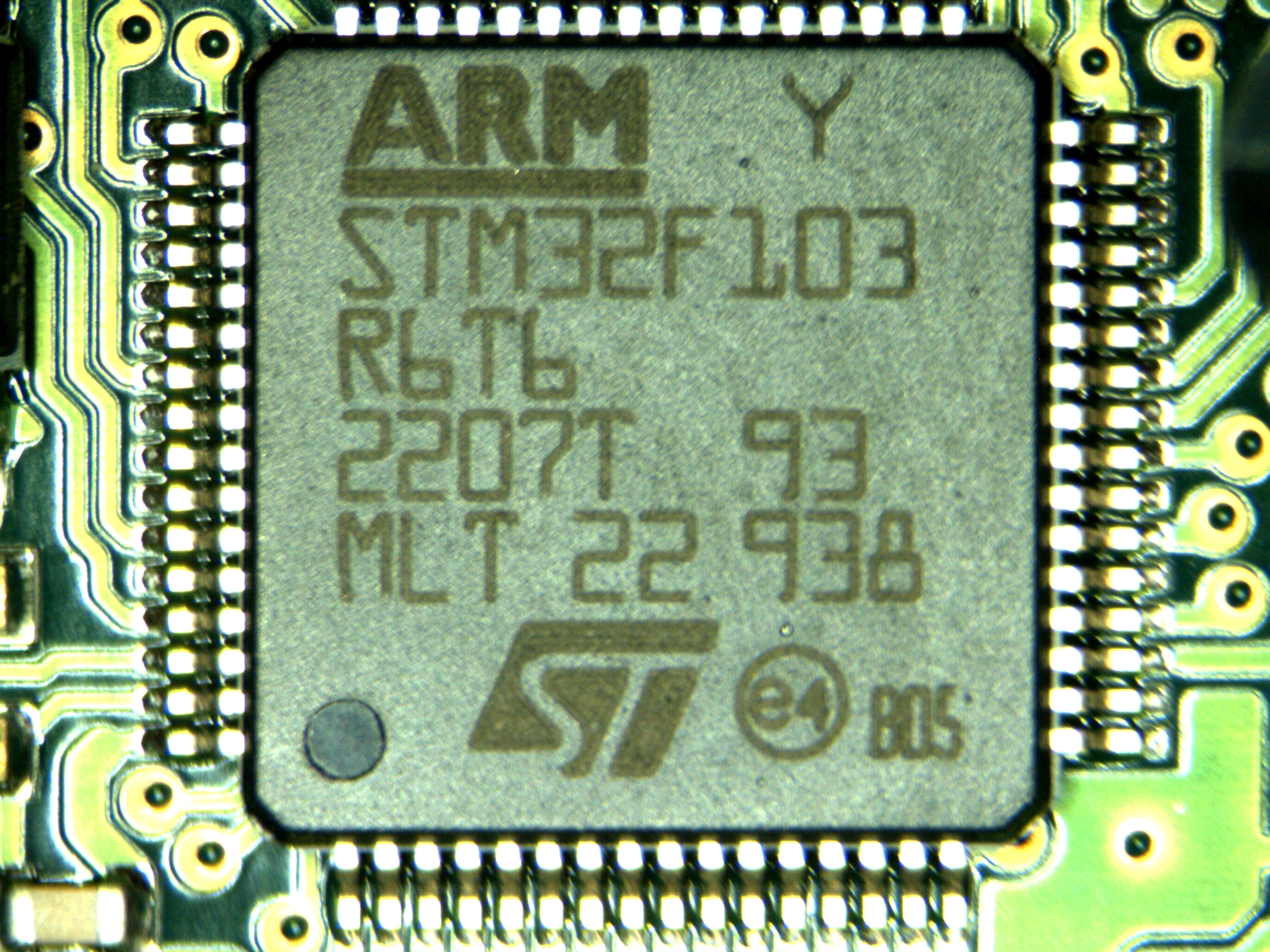|
To-126
TO-126 is a type of semiconductor package for devices with three pins, such as transistors. The package is rectangular with a hole in the middle to allow for easy mounting to a board or a heat sink. On one side of the package typically a metal sheet is exposed, with the transistor die bonded to the other side of the metal sheet inside the package. This allows for an efficient heat transfer from the transistor die to an external heat sink but also implies that the metal sheet is electrically connected to the die (for a bipolar junction transistor usually the collector is connected to this metal sheet). History and origin The JEDEC TO-126 descriptor is derived from the original full name for the package: Transistor Outline Package, Case Style 126. In the updated JEDEC outline system, the package is numbered as TO-225AA. STMicroelectronics STMicroelectronics Naamloze vennootschap, NV (commonly referred to as ST or STMicro) is a European multinational corporation, multinationa ... [...More Info...] [...Related Items...] OR: [Wikipedia] [Google] [Baidu] |
Semiconductor Package
A semiconductor package is a metal, plastic, glass, or ceramic casing containing one or more discrete semiconductor devices or integrated circuits. Individual components are fabricated on semiconductor wafers (commonly silicon) before being diced into die, tested, and packaged. The package provides a means for connecting it to the external environment, such as printed circuit board, via leads such as lands, balls, or pins; and protection against threats such as mechanical impact, chemical contamination, and light exposure. Additionally, it helps dissipate heat produced by the device, with or without the aid of a heat spreader. There are thousands of package types in use. Some are defined by international, national, or industry standards, while others are particular to an individual manufacturer. Package functions A semiconductor package may have as few as two leads or contacts for devices such as diodes, or in the case of advanced microprocessors, a package may have several th ... [...More Info...] [...Related Items...] OR: [Wikipedia] [Google] [Baidu] |
Transistors
A transistor is a semiconductor device used to Electronic amplifier, amplify or electronic switch, switch electrical signals and electric power, power. It is one of the basic building blocks of modern electronics. It is composed of semiconductor material, usually with at least three terminal (electronics), terminals for connection to an electronic circuit. A voltage or Electric current, current applied to one pair of the transistor's terminals controls the current through another pair of terminals. Because the controlled (output) power can be higher than the controlling (input) power, a transistor can amplify a signal. Some transistors are packaged individually, but many more in miniature form are found embedded in integrated circuits. Because transistors are the key active components in practically all modern electronics, many people consider them one of the 20th century's greatest inventions. Physicist Julius Edgar Lilienfeld proposed the concept of a field-effect transisto ... [...More Info...] [...Related Items...] OR: [Wikipedia] [Google] [Baidu] |
Heat Sink
A heat sink (also commonly spelled heatsink) is a passive heat exchanger that transfers the heat generated by an electronic or a mechanical device to a fluid medium, often air or a liquid coolant, where it is thermal management (electronics), dissipated away from the device, thereby allowing regulation of the device's temperature. In computers, heat sinks computer cooling, are used to cool central processing unit, CPUs, graphics processing unit, GPUs, and some chipsets and RAM modules. Heat sinks are used with other high-power semiconductor devices such as Transistor#Other transistor types, power transistors and optoelectronics such as lasers and light-emitting diodes (LEDs), where the heat dissipation ability of the component itself is insufficient to moderate its temperature. A heat sink is designed to maximize its surface area in contact with the cooling medium surrounding it, such as the air. Air velocity, choice of material, protrusion design and surface treatment are fact ... [...More Info...] [...Related Items...] OR: [Wikipedia] [Google] [Baidu] |
Die (integrated Circuit)
A die, in the context of integrated circuits, is a small block of semiconducting material on which a given functional circuit is Semiconductor fabrication, fabricated. Typically, integrated circuits are produced in large batches on a single wafer (electronics), wafer of electronic-grade Monocrystalline silicon, silicon (EGS) or other semiconductor (such as Gallium arsenide, GaAs) through processes such as photolithography. The wafer is cut (wafer dicing, diced) into many pieces, each containing one copy of the circuit. Each of these pieces is called a die. There are three commonly used plural forms: ''dice'', ''dies,'' and ''die''. To simplify handling and integration onto a printed circuit board, most dies are integrated circuit packaging, packaged in List of electronic component packaging types, various forms. Manufacturing process Most dies are composed of silicon and used for integrated circuits. The process begins with the production of Single crystal, monocrystalline sili ... [...More Info...] [...Related Items...] OR: [Wikipedia] [Google] [Baidu] |
Bipolar Junction Transistor
A bipolar junction transistor (BJT) is a type of transistor that uses both electrons and electron holes as charge carriers. In contrast, a unipolar transistor, such as a field-effect transistor (FET), uses only one kind of charge carrier. A bipolar transistor allows a small current injected at one of its terminals to control a much larger current between the remaining two terminals, making the device capable of amplification or switching. BJTs use two p–n junctions between two semiconductor types, n-type and p-type, which are regions in a single crystal of material. The junctions can be made in several different ways, such as changing the doping of the semiconductor material as it is grown, by depositing metal pellets to form alloy junctions, or by such methods as diffusion of n-type and p-type doping substances into the crystal. The superior predictability and performance of junction transistors quickly displaced the original point-contact transistor. Diffused trans ... [...More Info...] [...Related Items...] OR: [Wikipedia] [Google] [Baidu] |
JEDEC
The Joint Electron Device Engineering Council (JEDEC) Solid State Technology Association is a consortium of the semiconductor industry headquartered in Arlington County, Virginia, Arlington, United States. It has over 300 members and is focused on standardization of part numbers, defining an electrostatic discharge (ESD) standard, and leadership in the RoHS, lead-free manufacturing transition. The origin of JEDEC traces back to 1944, when Radio Manufacturers Association, RMA (subsequently renamed Electronic Industries Alliance , EIA) and National Electrical Manufacturers Association, NEMA established the Joint Electron Tube Engineering Council (JETEC) to coordinate vacuum tube type list of vacuum tubes, numberings. In 1958, with the advent of semiconductor technology, the joint JETEC-activity of Electronic Industries Association, EIA and NEMA was renamed into Joint Electron Device Engineering Council. NEMA discontinued its involvement in 1979. In the fall of 1999, JEDEC became ... [...More Info...] [...Related Items...] OR: [Wikipedia] [Google] [Baidu] |
STMicroelectronics
STMicroelectronics Naamloze vennootschap, NV (commonly referred to as ST or STMicro) is a European multinational corporation, multinational semiconductor contract manufacturing and design company. It is the largest of such companies in Europe. It was founded in 1987 from the merger of two state-owned semiconductor corporations: ''Thomson Semiconducteurs'' of United States/France and ''SGS Microelettronica'' of Italy. The company is incorporated in the Netherlands and headquartered in Plan-les-Ouates, Switzerland. Its shares are traded on Euronext Paris, the Borsa Italiana and the New York Stock Exchange. History ST was formed in 1987 by the merger of two government-owned semiconductor companies: Italian SGS Microelettronica (where SGS stands for ''Società Generale Semiconduttori'', "General Semiconductor Company"), and French ''Thomson Semiconducteurs'', the semiconductor arm of Thomson SA, Thomson. SGS Microelettronica originated in 1972 from a previous merger of two compan ... [...More Info...] [...Related Items...] OR: [Wikipedia] [Google] [Baidu] |
International Electrotechnical Commission
The International Electrotechnical Commission (IEC; ) is an international standards organization that prepares and publishes international standards for all electrical, electronics, electronic and related technologies. IEC standards cover a vast range of technologies from power generation, transmission and distribution to home appliances and office equipment, semiconductors, fibre optics, batteries, solar energy, nanotechnology, and marine energy, as well as many others. The IEC also manages four global conformity assessment systems that certify whether equipment, system or components conform to its international standards. All electrotechnologies are covered by IEC Standards, including energy production and distribution, electronics, magnetics and electromagnetics, electroacoustics, multimedia, telecommunications and medical technology, as well as associated general disciplines such as terminology and symbols, electromagnetic compatibility, measurement and performance, dependa ... [...More Info...] [...Related Items...] OR: [Wikipedia] [Google] [Baidu] |
Gosstandart
Gosstandart () was the Soviet government agency responsible for standardization, metrology, and quality management. The name is an abbreviation for ''Gosudarstvennyy standart'' (‘State Standard’). History Established in 1925, as a committee for standardization within the USSR Council of Labor and Defence, ''Gosstandart'' was at first put in charge of inspecting measuring instruments used in industrial and agricultural production and later was tasked with developing, updating, and disseminating GOST standards. Over the course of its existence, the agency was reformed a number of times, receiving a new name with each transformation: the ''National Committee for Standardization''; the ''Committee for Standards, Metrology, and Measuring Instruments''; the ''State Committee for Standards''; the ''State Committee for Standards and Product Quality Management''. The agency received its nickname, ''Gosstandart'', in 1970. Later years After the dissolution of the USSR, the Russian go ... [...More Info...] [...Related Items...] OR: [Wikipedia] [Google] [Baidu] |
GOST
GOST () refers to a set of international technical standards maintained by the Euro-Asian Council for Standardization, Metrology and Certification (EASC), a regional standards organization operating under the auspices of the Commonwealth of Independent States (CIS). All sorts of regulated standards are included, with examples ranging from charting rules for design documentation to recipes and nutritional facts of Soviet-era brand names. The latter have become generic, but may only be sold under the label if the technical standard is followed, or renamed if they are reformulated. History GOST standards were originally developed by the government of the Soviet Union as part of its national standardization strategy. The word GOST ( Russian: ) is an acronym for ''gosudarstvennyy standart'' (Russian: '), which means ''government standard''. The history of national standards in the USSR can be traced back to 1925, when a government agency, later named Gosstandart, was establi ... [...More Info...] [...Related Items...] OR: [Wikipedia] [Google] [Baidu] |







